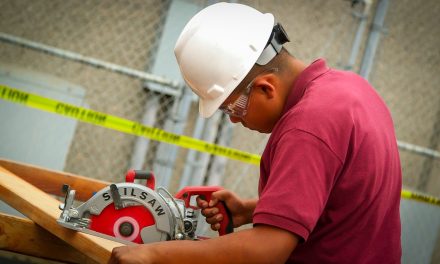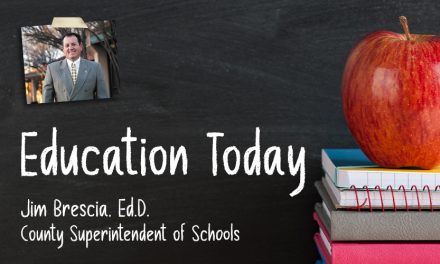Over the past 20 pressure-filled months, I reviewed multiple articles, plans, and reports about the impact of COVID-19 on instruction. I have personally observed education employees across San Luis Obispo County skillfully managing responsibilities under extraordinary circumstances. The positive attitude and actions of students, teachers, support staff, families, and the community reminded me again of our many blessings. Here are a few stories highlighting those blessings in the form of takeaways about distance learning improving in-person practices.
“We found it difficult to maintain our train of thought with so many student interruptions online.” Adapting to distance learning was an adjustment, and some students were not comfortable turning on their cameras. Initially, some did not turn on their microphones either. With teacher and support staff encouragement, the students activated their mics and cameras. Slowly, more students joined in and began to show their personalities. In a very short time, the instructional team experienced chaos with students talking simultaneously. The answer to the dilemma came in the form of a chat room or organized routine. The teacher explained the concept to the classes and set up procedures to follow (similar to an in-person classroom).
By applying the chat room concept, the students could pose questions for the whole class or submit a question privately for the teacher. The chat room option meant that lessons could flow more smoothly. The use of chat rooms reminded the team about the importance of classroom management procedures for in-person instruction. When in-person services began this fall, the team used the initial days to practice procedures and intentionally reviewed these as new students joined their classes. This middle school team in this example revealed that one of their favorite influences was 7 Tips for Breakout Room Success, by Stephanie Rothstein.
“Finding a personal and professional balance in presenting yourself to your students.” This classroom quote describes the realization that educators must maintain a certain professional distance while at the same time personally relating to their students. Checking on students via Zoom or Google Meets provided a visual cue and opened up the personal lives of those connecting from homes. The cute dog in the background is charming to some and distracting to others. Should we have our laundry that needs attention visible while teaching online? Over the years, I have observed many types of classrooms and learning environments, some tidy, others cluttered. It is vital to remember that school should remain a professional environment with a personal feeling tone.
Most child and adolescent development courses stress the importance relationships play in successful classrooms. The teacher, in this instance, reflected on the lesson learned during her pre-teaching days: “It’s all about relationships!” We need to interact with our students in a personal way, sharing information and asking questions about interests while at the same time maintaining a professional frame. Over time comfort levels will improve, and student interactions will grow. This educator stressed the importance of social-emotional learning by starting lessons with a positive message. “Virtual teaching reminded me of the power a positive tone and attitude hold in shaping a lesson.” Learning environments that are personal and professional directly benefit students. This classroom continues the virtual practice of having students recite “Optimistic Closures” (a method of sharing something they learned) now that they are back in person.
“I felt so relieved when I realized that I wasn’t the only one who felt like I did.” When we commit to a meaningful conversation about our challenges and opportunities with our peers, we can better serve our students. To that end, we must continue to support each other and join together as one community. It is easy to allow negative thoughts and feelings to creep into our heads. Mental health experts remind us that focusing on the positive in our lives can help filter out the constant barrages of discouraging news. Promoting a positive mindset will assist in providing an effective support system.
Support systems are more than simple “do-it-yourself” projects. Our family, friends, community, and colleagues all represent pieces of a support network. Winston Churchill was quoted during World War II as saying, “Success is not final, failure is not fatal: it is the courage to continue that counts.” When we look for opportunities during difficulty, we can improve our situation and that of others.
As illustrated in the stories above, the challenges and confusion that surrounded distance learning were overwhelming to some and celebrated by others. I reviewed reports of loneliness, discouragement, and anxiety alongside requests for additional virtual learning. When educators and school leaders begin sharing these challenges and opportunities, we will address the new normal. The daily, weekly, and monthly professional collaboration thrust upon us by COVID-19 is a practice that will benefit a post-pandemic workplace. When we share “truth-telling” with colleagues, we allow others to assist and support our challenges.
These are just a few of the success stories we can learn from as we move forward. I am very proud of our schools and consider it an honor to serve as your county superintendent of schools.







